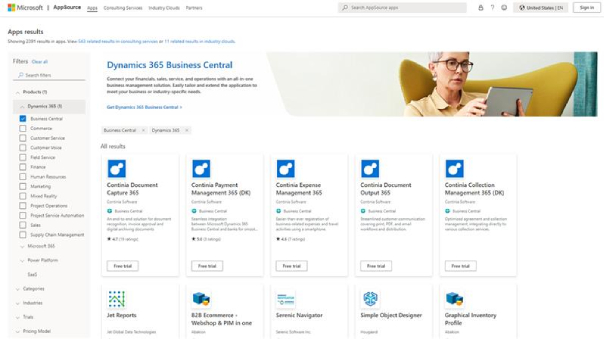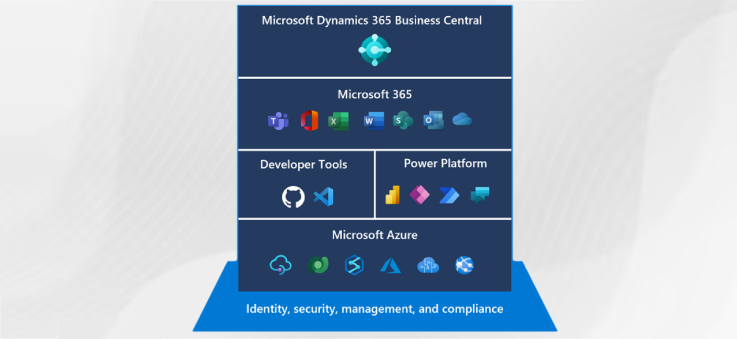Customers now engage with companies via multiple channels—social media, email, websites, mobile apps, and more—expecting consistent service and messaging throughout their journey. One solution that addresses this complex challenge is Salesforce Omnichannel, a robust tool designed to enhance customer experiences by unifying communication and interaction across various channels.
This blog will delve into the intricacies of Salesforce Omnichannel and how it helps businesses deliver a seamless customer experience across multiple channels, thus driving engagement, increasing satisfaction, and ultimately boosting business growth.
What is Salesforce Omnichannel?
Salesforce Omnichannel is an intelligent routing engine within the Salesforce ecosystem that allows businesses to distribute work, customer inquiries, and service requests to the most appropriate agents or resources in real time. Omnichannel enables seamless integration of multiple communication channels, such as:
- Phone
- Social media
- SMS
- Live chat
- Web forms
Omnichannel provides a unified customer service experience by routing all these interactions through a centralized system, ensuring that customers receive a consistent and efficient response, no matter which channel they use. This leads to faster resolutions, higher customer satisfaction, and improved agent efficiency.
Difference Between Multichannel and Omnichannel
Before diving deeper, it’s essential to differentiate between multichannel and omnichannel approaches.
- Multichannel: In this approach, businesses use multiple channels to communicate with customers. However, each channel often operates independently, creating silos in communication. This can result in inconsistent customer experiences and fragmented service.
- Omnichannel: An omnichannel strategy breaks down these silos by integrating all channels into a unified experience. Customers can switch between channels seamlessly, and agents have access to the full context of the customer’s interactions, enabling them to provide personalized and cohesive support.
Salesforce Omnichannel embodies this latter approach, ensuring that all channels are connected, enabling fluid customer journeys.
Key Features of Salesforce Omnichannel
Salesforce Omnichannel provides businesses with several powerful features that streamline communication and optimize customer support processes.
Intelligent Workload Distribution
Salesforce Omni channel’s intelligent routing automatically assigns tasks based on agents’ availability, capacity, and skill set. Whether a customer contacts a business via live chat, email, or social media, the task is routed to the most suitable agent. The workload distribution considers factors such as:
- Agent skill sets (language proficiency, technical expertise, etc.)
- Current workload
- Availability status
This feature ensures that tasks are not just randomly assigned, but intelligently distributed, preventing overloading any single agent while ensuring the best possible outcome for the customer.
Real-Time Monitoring and Analytics
Omnichannel supervisors can monitor live interactions in real-time, viewing agents’ performance and workloads. Supervisors can also intervene when necessary, either by redistributing work or assisting agents with difficult tasks. Real-time data insights allow for better decision-making and optimization of resources.
Moreover, Salesforce provides detailed analytics and reporting capabilities that give businesses a comprehensive view of customer interactions across all channels. This helps in identifying bottlenecks, customer pain points, and potential areas for improvement.
Customizable Routing and Assignment Rules
Salesforce Omnichannel provides businesses with flexibility in setting up customizable routing and assignment rules. This feature allows businesses to define criteria such as customer type, issue urgency, and specific agent skills to ensure that the right tasks go to the right people.
For instance, high-priority customer queries can be routed to senior agents, while routine inquiries are handled by less experienced staff. This allows businesses to optimize resources while ensuring timely and effective resolution for customers.
Omnichannel Presence
Salesforce Omnichannel Presence allows agents to manage their availability across channels, preventing them from being overwhelmed with tasks from multiple platforms at once. By tracking an agent’s presence in real time, the system intelligently assigns tasks based on their capacity, improving response times and ensuring better service quality.
Seamless Integration with Other Salesforce Products
One of the most significant advantages of Salesforce Omnichannel is its seamless integration with other Salesforce products like Service Cloud, Sales Cloud, and Marketing Cloud. This integration provides a holistic view of customer data, including their purchasing history, previous interactions, and even marketing preferences.
With this 360-degree view, agents can offer more personalized and contextualized support. They can also easily escalate issues to other departments or teams, ensuring that customers receive comprehensive and effective solutions to their problems.
How Salesforce Omnichannel Improves Customer Experience
Salesforce Omnichannel offers various benefits for businesses, but the most critical impact is on customer experience. Here’s how it enhances the customer journey:
Consistent and Personalized Interactions
Customers hate repeating themselves. With Salesforce Omnichannel, agents have full visibility into past customer interactions, regardless of the channel used. This ensures that every touchpoint is personalized and consistent. Customers can switch between channels without losing context, and agents can continue the conversation seamlessly.
For instance, a customer who starts a query through a chatbot but later needs human assistance via phone or live chat will not need to explain their issue again. The agent handling the case will have access to all prior communications, enabling faster and more personalized support.
Faster Response and Resolution Times
With intelligent routing and real-time agent availability monitoring, Salesforce Omnichannel ensures that customer queries are directed to the right agent quickly. This reduces response times, leading to faster resolutions. Additionally, by balancing the workload among agents, Omnichannel prevents burnout and keeps service quality high, leading to satisfied customers.
Cross-Channel Flexibility
Customers interact with businesses through various channels, often switching between them based on convenience. Salesforce Omnichannel enables customers to move effortlessly from one channel to another while maintaining the context of their issue. This ability to handle cross-channel transitions seamlessly improves customer satisfaction and loyalty.
For example, a customer may initiate a support request on social media, follow up via email, and then call customer service. Salesforce Omnichannel ensures that each agent in this chain has the complete context of the previous interactions, thus providing a cohesive experience.
Proactive Customer Support
Salesforce Omnichannel, when combined with other Salesforce tools like Einstein AI and Salesforce Knowledge, can provide proactive customer support. For example, if a customer repeatedly contacts the business with a recurring issue, Einstein AI can automatically suggest solutions or knowledge articles based on past interactions.
Proactive support not only reduces the need for customers to reach out but also enhances their overall experience by providing timely and relevant assistance.
Streamlining Internal Operations
The benefits of Salesforce Omnichannel aren’t just limited to customer experience. It also significantly enhances the internal operations of customer service teams.
Improved Agent Productivity
By streamlining the routing process and allowing agents to manage their workload more effectively, Salesforce Omnichannel ensures that agents can focus on solving customer issues rather than worrying about juggling multiple tasks. Additionally, with tools like Omnichannel Supervisor, managers can monitor agent performance in real time and provide guidance or redistribute work as necessary.
Reduced Agent Burnout
One of the major challenges customer service teams face is agent burnout, which often results from handling high volumes of tasks without adequate support. Salesforce Omnichannel helps alleviate this issue by intelligently distributing work and providing real-time insights into agent workloads. This ensures that agents aren’t overwhelmed, leading to higher job satisfaction and lower turnover rates.
Comprehensive Reporting and Analytics
Omni channel’s built-in reporting tools give organizations visibility into their customer service performance across all channels. Managers can track metrics such as average response times, customer satisfaction scores, and agent performance. This data helps organizations identify areas for improvement, optimize their service strategies, and continuously enhance both customer and agent experiences.
Best Practices for Implementing Salesforce Omnichannel
To maximize the benefits of Salesforce Omnichannel, businesses should follow these best practices:
Understand Customer Preferences
Before implementing Omnichannel, it’s crucial to understand how customers prefer to interact with your business. Analyze customer behavior and preferences to ensure that the right channels are available and prioritize seamless integration between them.
Tailor Routing Rules to Your Business
Customize routing rules based on your business needs. Consider factors such as agent skills, customer segmentation, and the urgency of issues when setting up Omnichannel. This ensures that customer requests are handled by the most appropriate resources.
Integrate with Other Salesforce Products
Leverage the full power of Salesforce by integrating Omnichannel with other tools like Einstein AI, Service Cloud, and Marketing Cloud. This provides agents with more context and actionable insights, enabling them to deliver more personalized support.
Monitor and Adjust in Real-Time
Use the Omnichannel Supervisor tool to monitor agent performance and customer interactions in real time. Be ready to make adjustments to routing rules, workloads, and resource allocation to optimize the customer experience.
Train Agents on Omnichannel Tools
Ensure that your agents are well-trained in using Salesforce Omnichannel and its related tools. Providing them with the necessary knowledge and resources will allow them to use the platform more efficiently, improving their productivity and the overall customer experience.
Conclusion
Salesforce Omnichannel is a powerful tool that enables businesses to deliver seamless, consistent, and personalized experiences to customers across multiple channels. By intelligently routing customer inquiries and integrating data from all touchpoints, businesses can ensure faster resolutions, enhanced customer satisfaction, and improved agent productivity.
In an era where customer experience is a key differentiator, leveraging Salesforce Omnichannel can provide the edge needed to stay ahead of the competition, offering not just a solution but a transformational approach to customer service.




